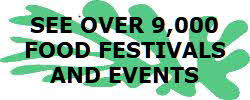FoodReference.com (since 1999)
COOKING TIPS AND HINTS SECTION
Home | Articles | Food Trivia | Today in Food History | Food Timeline | Recipes | COOKING_TIPS | Food Quotes | Who’s Who | Culinary Schools & Tours | Food_Trivia_Quizzes | Food Poems | Free Magazines | Food Festivals and Events
Cooking and Kitchen Tips and Hints, Measurements, Shopping Advice, Serving Ideas, etc.
See Also Articles: Freezing Food; Freezing Bread
Frozen Foods
A freezer full of food uses less energy than an empty one. Keep your freezer will stocked to save energy and give yourself more choices for each meal.
Buying Frozen Foods:
• Select packages that are clean and firm. Discolored packages and large amounts of frost may mean that the package has not been kept at the appropriate temperature during storage.
• Only buy ice-free, undamaged packages.
• Make the frozen food department your last stop in the supermarket.
• Pack all frozen food together to help maintain their cold temperature.
• Return home immediately from the supermarket and place all foods in the freezer.
• Buy frozen food from a store with an orderly, well-managed frozen food section.
• Put a purchase date on all frozen food products, then rotate foods, putting newly purchased items in the back of the freezer. Use products on a "first in, first out" basis
Frozen Food Storage Tips:
• Maintain proper freezer temperature -- no higher than 0° F. Use a refrigerator/freezer thermometer to verify setting.
• Rotate and clearly date your frozen foods -- first in, first out.
• Arrange the contents of your freezer in an orderly way. Store baked goods in one section, meat and fish in another, etc.
• Thaw with care, preferably at refrigerated temperatures less than 40°F., less ideally under running water no warmer than 70°F.
• Do not refreeze thawed frozen foods, for safety and quality reasons.
• Keep your freezer clean to prevent transfer of off-tastes and odors.
• Have sufficient storage space so that refrigerated air can circulate around the food.
National Frozen & Refrigerated Foods Association
Food safety experts recommend thawing foods in the refrigerator or the microwave oven, or putting the package in a water-tight plastic bag submerged in cold water and changing the water every 30 minutes. Gradual defrosting overnight in the refrigerator is best because it helps maintain quality.
When microwaving, follow package directions. Leave about 2 inches (about 5 centimeters) between the food and the inside surface of the microwave to allow heat to circulate. Smaller items will defrost more evenly than larger pieces of food. Foods defrosted in the microwave oven should be cooked immediately after thawing.
Do not thaw meat, poultry and fish products on the counter or in the sink without cold water; bacteria can multiply rapidly at room temperature.
(Compiled from the FDA Consumer - latest revision, July 2002)
FDA's Food Information Line
1-888-SAFEFOOD (1-888-723-3366)
Recorded messages 24 hours a day, every day. FDA public affairs specialists available 10 a.m. to 4 p.m. Eastern time, Monday through Friday.
COOKING TIPS
Please feel free to link to any pages of FoodReference.com from your website.
For permission to use any of this content please E-mail: james@foodreference.com
All contents are copyright © 1990 - 2025 James T. Ehler and www.FoodReference.com unless otherwise noted.
All rights reserved. You may copy and use portions of this website for non-commercial, personal use only.
Any other use of these materials without prior written authorization is not very nice and violates the copyright.
Please take the time to request permission.

